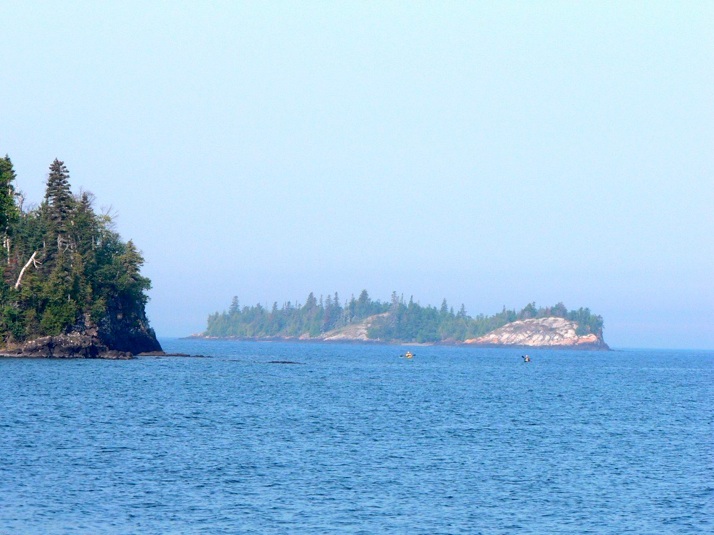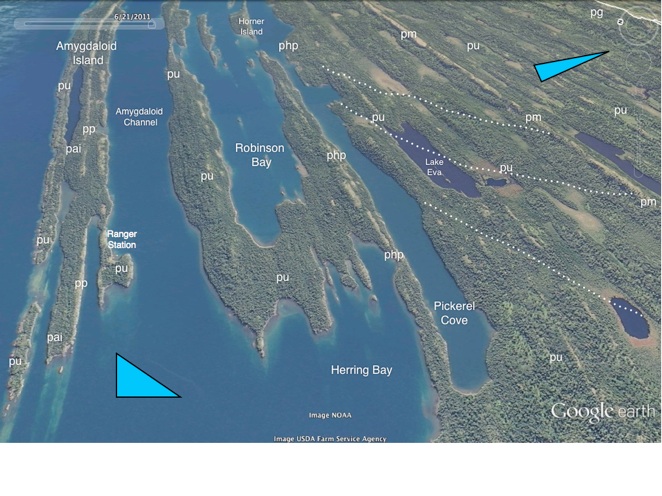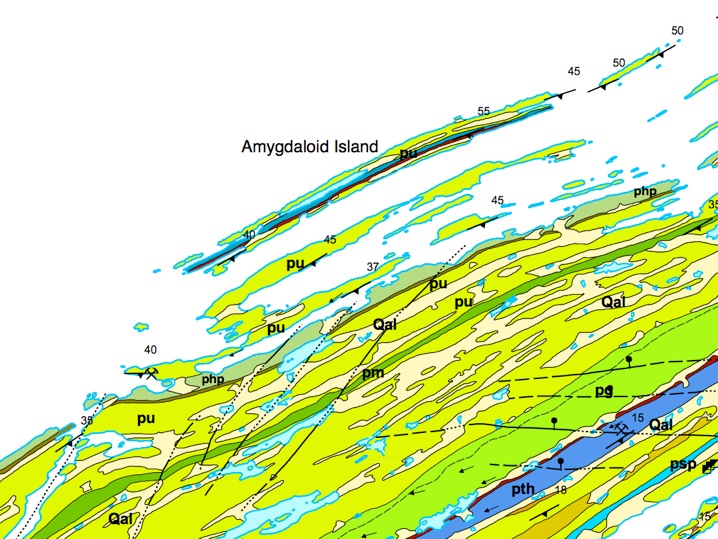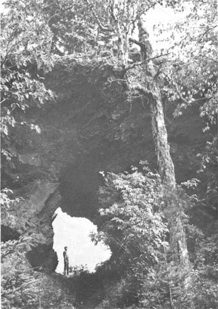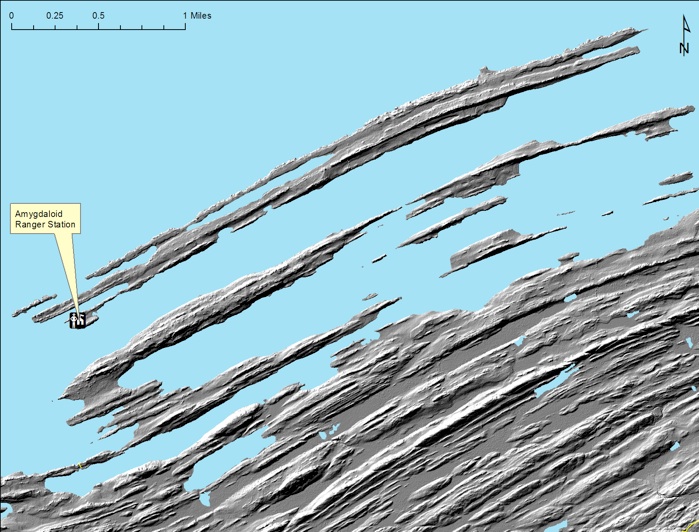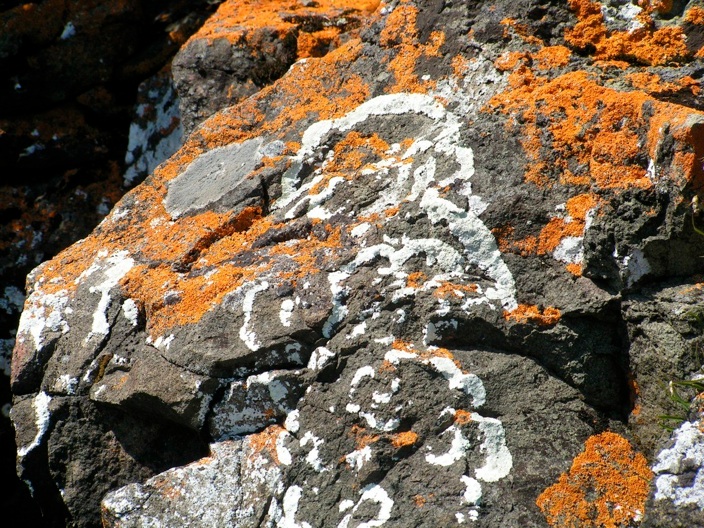The Amygdaloid Channel
From McCargoe Cove, we will continue to the NE, passing through the Amygdaloid Channel. Amygdaloid Island is composed of the oldest lavas of the PLV on Isle Royale and is supported by a large flow, the Amygdaloid Island flow (pai), which is a fine-grained basalt (termed "trap"). At the W end ofAmygdaloid Island is the National Park Service (NPS) ranger station near Kjaringa Kjeft. Crystal Cove is 3.2 km (2 mi) E of the station, which was, beginning in 1906, a private residence and fishery.
As we travel through the Amygdaloid Channel, drowned ridge and valley topography of Isle Royale will become very visible, with more resistant lava flows holding up linear islands. Shipwrecks are numerous on the many "reefs" found all around the NE end of Isle Royale. Opposite of Crystal Cove on the S side of Amygdaloid Island is Belle Isle, which is a beautiful campground, accessible only by boat and canoe, located on the site of a resort that operated in the 1920s, serving the grand lake steamers of that period.


